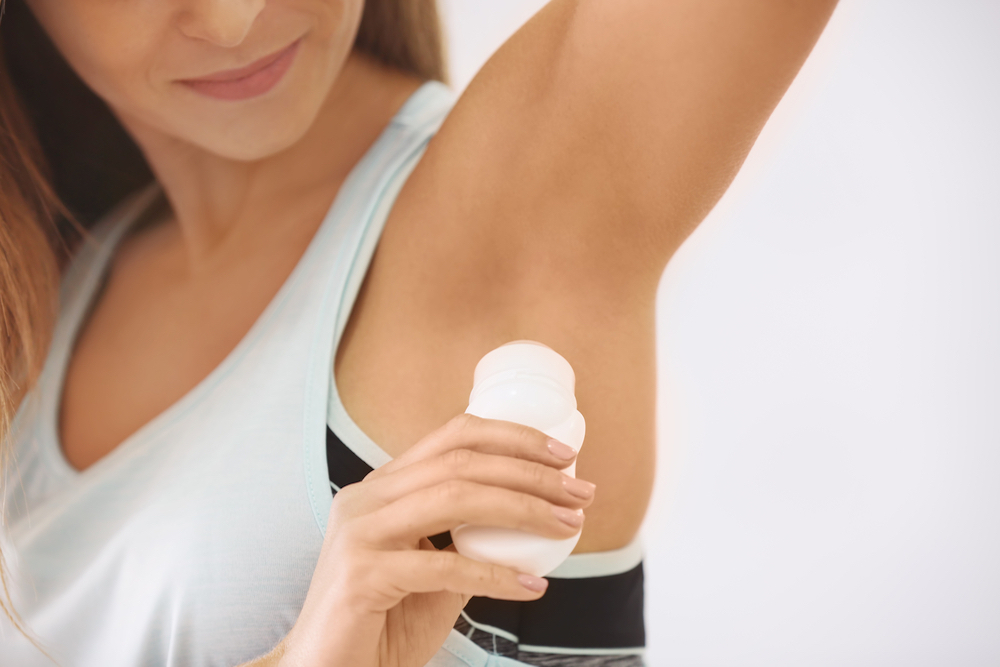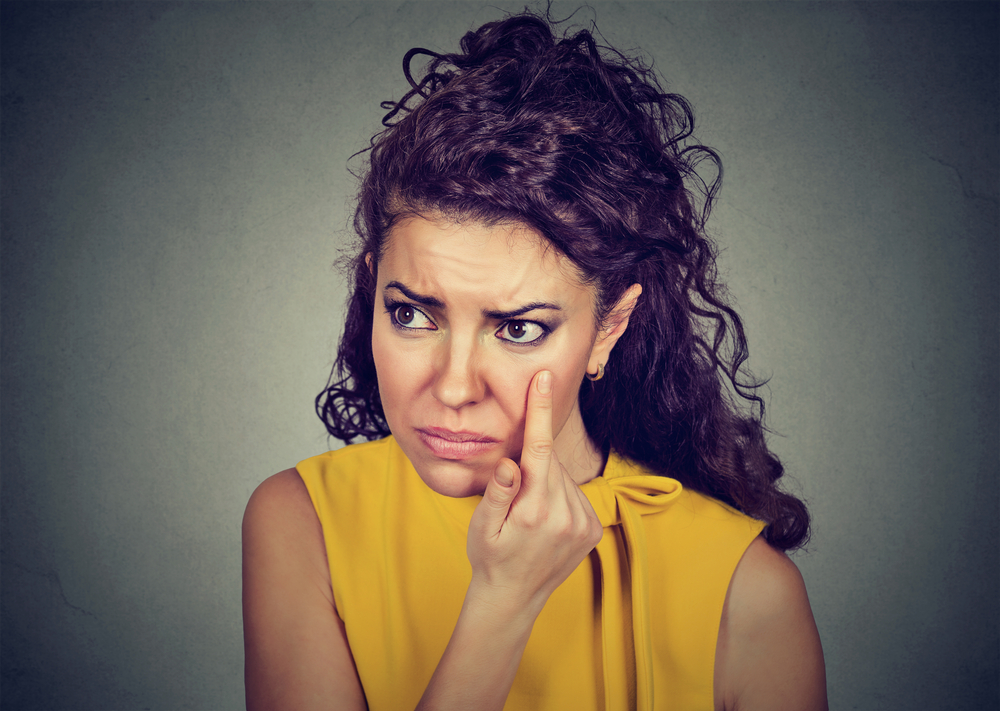- Hyperhidrosis is a skin disorder characterized by excessive sweating which normally begins during adolescence.
- The condition can be effectively managed by both non-invasive and invasive treatments.
- 15.3 million people in the United States suffer from hyperhidrosis, or about 4.8% of the U.S. Population.
What is hyperhidrosis?
Hyperhidrosis is a condition that results in excessive sweating caused by an overstimulation of the sympathetic nervous system. People with hyperhidrosis typically experience sweat that drips off their hands, soaks their clothes and interferes with normal daily activities. The impact hyperhidrosis can have on a person’s life extends beyond the physical symptoms. Many sufferers find themselves dealing with social anxiety and embarrassment caused by their excessive sweating.
What causes hyperhidrosis?
Hyperhidrosis is caused by an overactive sympathetic nervous system that leads to excessive stimulation of the sweat glands.
What are the symptoms?
Sweating is common when you’re exposed to hot temperatures, feeling anxious, stressed or exercising. Excessively sweating in cooler weather or when performing normal daily tasks is not normal. The amount each person sweats will vary from person-to-person, but when sweating disrupts normal activities, you might have hyperhidrosis.
Symptoms of Hyperhidrosis Include:
- Excessive sweating beginning shortly after waking
- Clothing soaked with sweat
- Sweat dripping from the soles of your feet, palms of your hand and/or armpits
Hyperhidrosis Can Result In:
- Irritated and sometimes painful skin
- Fungal or bacterial skin infections
- Social anxiety and embarrassment, which sometimes leads to depression or social withdrawal
- Reluctance to wear light colored clothes to hide sweat soaked clothing
- Frequently changing clothes and showering more than 2 times a day
Your hyperhidrosis condition will vary, but many find their quality of life and overall well-being is affected.
Types of Hyperhidrosis
Doctors distinguish between two kinds of hyperhidrosis: primary and secondary.
Primary Hyperhidrosis
People with primary hyperhidrosis have experienced excessive sweating since their childhood or adolescence. According to a 2016 on the prevalence of hyperhidrosis, approximately 2.8% of the U.S. population suffers from primary hyperhidrosis. Of those that suffer from primary hyperhidrosis, nearly 50% have a family member who also suffers from excessive sweating. This is because primary hyperhidrosis is an inheritable genetic trait.
Body Areas Imacted By Primary Hyperhidrosis:
Secondary Hyperhidrosis
Secondary hyperhidrosis appears during adulthood and is caused by a health condition or side effect of a medication you might be taking. Sweating with secondary hyperhidrosis may be present throughout your entire body or in a localized area.
Medical Causes of Secondary hyperhidrosis:
- Cancer (night sweats)
- HIV
- Tuberculosis
- Menopause
- Hyperthyroidism
- Diabetes
- Obesity
- Heart Attack
- Drug Withdrawal
- Stroke
- Brain or Spinal Cord Damage
- Parkinson’s Disease
- Lung Disease
As with any health concern, it’s important that you get a proper diagnosis from a medical specialist before deciding on a course of treatment.
Prescription Medications That Cause Secondary Hyperhidrosis:
- Analgesics (pain relievers)
- Antimicrobials (antivirals and antibiotics)
- Cardivascular (heart and blood pressure)
- Chemotherapeutic (oncology/cancer)
- Dermatologic (skin and topicals)
- Endocrine (hormonal)
- Gastrointestinal
- Neuropsychiatric
- Hematologic/Immunologic/Immunosupressant
You may view the full list of prescription medications that cause secondary hyperhidrosis here.
RELATED: Is Sweating Good for You? Some Health Benefits May Be Overstated
What are the treatments for hyperhidrosis?
There are many approaches to hyperhidrosis, all of them seeking to either manage the condition or eliminate it entirely.
Antiperspirants
Dermatologists typically recommend a patient try an over-the-counter or prescription antiperspirant first. This is the simplest and cheapest solution, and can be effective if used correctly.
Dr. Gabriele Weichert of Synergy Medical Aesthetics in Nanaimo, British Columbia, recommends patients look for one with at least 20% aluminum hexahydrate as the active ingredient, and offers some advice for its application:
“Unlike other antiperspirants, it should be applied to dry skin in the evening for several nights in a row, then twice weekly.”
The American Osteopathic College of Dermatology (AOCD) recommends Drysol as the best prescription antiperspirant for hyperhidrosis.
Unfortunately, strong is not always strong enough. This is particularly true for areas of the body with thicker skin, such as the palms of the hands or soles of the feet. When antiperspirants prove ineffective, Dr. Weichert next recommends injections of botulinum toxin type A, also known as Botox.
Iontophoresis
Botulinum Toxin (Botox)
Botox is perhaps the world’s best-known cosmetic medicine, widely used to smooth out wrinkles, frown lines and crow’s feet or add volume and definition to lips. What is less known is that the U.S. Food and Drug Administration (FDA) has also approved Botox for treatment of hyperhidrosis.
Applied by injection to the underarms, hands or feet, botulinum toxin works by blocking a chemical in the body that stimulates the sweat glands. Most patients notice results after four or five days, and the effects can last up to six months, sometimes longer.
Recent studies underscore just how effective injections can be. In one study published by the Journal of the American Academy of Dermatology (JAAD), 94% of subjects experienced significant improvement after four weeks. Response was still high after 16 weeks. Almost every subject in the study (98%) said they would recommend the treatment to others.
Still, there are some downsides to botulinum injections. Aside from potential side effects, some of which may be serious or at least inconvenient — for instance, a weakened grip following a hand injection — the therapy requires ongoing visits to a clinic for repeated treatment. For those who wish to avoid all that time and expense, a more long-lasting solution might be more appealing.
MiraDry
MiraDry was approved by the FDA in 2011 and is now widely available for treating hyperhidrosis. Doctors use a handheld device to emit electromagnetic energy to the patient’s underarm area. This permanently destroys the sweat glands, resulting in a dramatic reduction in perspiration. It’s a relatively quick procedure with minimal discomfort — most patients resume normal activities directly afterwards.
Dr. George P. Chatson, a board-certified plastic surgeon who treats hyperhidrosis at offices in Massachusetts and New Hampshire, recommends miraDry for its long-term results.
In his words, “Patients usually experience an 80% or more reduction in underarm sweating. Many see a satisfactory benefit after one miraDry procedure, but some may require a second procedure for optimal results.”
SculpSure
SculpSure is another recently patented, non-invasive technology for treating hyperhidrosis that is virtually pain-free. With this procedure, a laser is directed at the underarm area, shrinking the sweat glands. Results have been shown to last up to a year, making it a longer-term option than Botox, though still requiring return visits.
As with miraDry, the side effects are limited to some local soreness or irritation and downtime is minimal. Dr. Bruce Katz, director of JUVA Skin and Laser Center in New York City, recommends SculpSure to his patients because “in two short treatments it gives them long-lasting results.”
Home Remedies
There are several treatment options you can try at your home. Here are a few suggestions:
- Wearing breathable clothing and footwear
- Changing your socks and clothing frequently
- Bathing or showering multiple times a day
- Applying talcum powder to your underarms and feet
What is hyperhidrosis surgery?
Sweat glands can be surgically removed from a patient’s armpit while he or she is under a local or full anesthetic, operations known as subcutaneous curettage or sympathectomy. While these procedures offer permanent results with success rates of over 90%, they have fallen out of favor among doctors in recent times. That’s because the operations can leave scars and/or cause compensatory sweating elsewhere on the body.
Fortunately, technological advances now offer long-term results through non-invasive means.
Choosing the Best Treatment Option
There have been various advances in treating hyperhidrosis and doctors will recommend a course of treatment based on preference and their examination of a patient.
Hyperhidrosis can be permanently treated through a localized surgical procedure, however, specialists tend to recommend non-invasive treatments such as Botox, miraDry, or SculpSure. All of these have been shown to be quick procedures with minimal side effects and excellent results. Botox and SculpSure require return visits to remain effective, while miraDry offers the most long-lasting results from a single visit.









